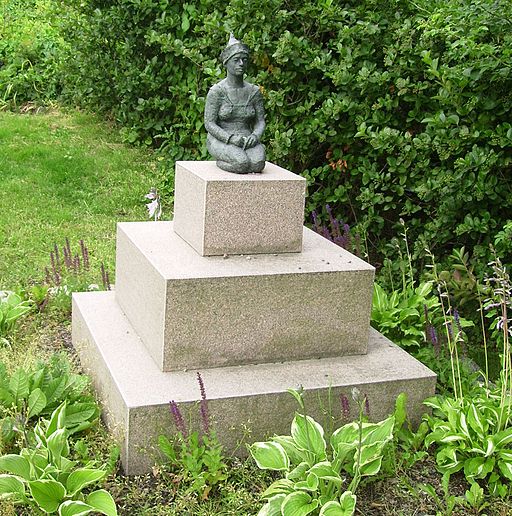 As music lovers or musicians, our main questions when it comes to meditation music are the means to achieve or enhance meditative effects of sound and music.
As music lovers or musicians, our main questions when it comes to meditation music are the means to achieve or enhance meditative effects of sound and music.
Meditation is not something exclusive for gurus and their fans. Many people use meditation to clear their minds, stay mentally fit and get some stress off. If you are doing hard sport, meditation is a part of your daily routine as well as it is for a manager in a stressful environment. Just don’t call it meditation but “time to calm down” and you hit the point.
Meditation is when you allow your mind to be fully present at what you are doing just now and not focused on what’s going on in your head. The common misconception about meditation is that we have to to concentrate on doing nothing. If you want to meditate successfully, just focus your mind on the present moment. And for this, music can be an essential part of a “just-being-there” moment.
Playing music can be a form of meditation. And the purpose of meditation music can be to heighten your senses through increased awareness.
What music do people recommend for meditation?
If you search on the internet you will find tons and tons of meditation music. If you take some time to hear into many of them, you’ll notice some basics that seem to apply to meditation music.
- First you’ll notice the length: meditation music is always quite longer than the usual 3 to 5 minute song.
- Second, in most cases you will find slow repetitive rhythm patterns.
- Third, the instruments used have either a slow attack phase or low loudness. You won’t find much loud percussion nor sudden violent flutes and violins.
- Fourth, often some nature sounds are incorporated.
All this is general enough to give a lot of space to meditation music. But obviously you can’t give out a set of rules to make meditation music. The reason for this is that the meditation process is very personal, tied to individual experiences and preferences. So there are some more rules for your individual meditation music to be really helpful for you personally.
Rule 1 for your own meditation music: You have to like it!
Meditation music is always perceived as something pleasant. Otherwise you could not relax!
Rule 2: Is should be ” slow”
Slow for you may not be slow for me, but if you are going to listen to music in order to calm down and reprogram your brain, fast and aggressive music is not the best idea. This is related to how our body responds to music. The heartbeat tends to adjust to any music or rhythm we hear. Listening to hard and fast beats accelerates our heartbeat and pulse. This is exactly the contrary of what we look for in meditation.
So make it slow. So slow it gets you down on a steady regular low pulse. What is low is different from person to person, but we can say that a pulse of 60 beats per minute is just fine. Many meditation schools and centers use music with recurring rhythmic patters to ease the meditation process.
Rule 3: Match your meditation image
Many people that do introspection, meditation or whatever they call it start by building imaginary landscapes or images in their mind and concentrate on them. If you are using imagined landscapes for meditation, try to choose something that encourages the sound of your imaginary landscape and suits the image. Are you meditating about a clear lake in the mountains? Make some nature sounds like water, forest or wind help you! Are you meditating to the picture of the seashore? A beach background would be great! The same goes for nature sounds: The sound of whales and dolphins has already a long tradition of being used for meditative music.
Rule 4: Choose a familiar cultural frame
Cultural aspects count. In the west we have imported a lot of oriental stuff and adapted it to our way of life. Same applies to the east. But hang on: Do you really feel relaxed with a Japanese flute if you grew up in Boston? And do you really like a violin if you grew up with Japanese flute music?
If this example seems exaggerating think of a Spanish flamenco passionate and a German choir conductor. One may feel ease at home listeing to Estrella Morente, the other one relaxes with a Bach Cantata.
If you grew up with an open musical mind and feel familiar with all kinds of music, you will find a vast tradition of ritual music cultures open for all kinds of experiments. Religious music from India, America, Asia, Africa and Europe goes back long time ago. Think of the gregorian chants of the christian music tradition, Jewish old melodies, the mantras in Hindu or Buddhist tradition, and many other ritual music from all over the world. Chanting with religious background lies in the meditation tradition. The labels change with time as the music does, but the intention and the spirit stay the same.
Meditation music for active meditations
Meditation music has to support the meditation process. This process is known to alter the brain waves, slower the heartbeat, deepen breath and reduce muscle tension. People who meditate profoundly have a greater activity in their left frontal brain and show stronger Gamma waves in EEG.
Meditation music is not only used as a nice background to cling on while letting the thoughts pass by. Explicit meditation music aims to grab your attention in a way similar to watching your breath. Concentrating on the music lets you “forget” about the rest, thus detoxing your mind from language, which is more or less detoxing from thinking.
There are many musicians that appreciate meditation music that does not rely on repetitive patterns that much. I’m thinking here about one of the first New Age records ever, the album Music for Zen Meditation from the jazz clarinetist Toni Scott, Shinishi Yuize and Hozan Yamamoto from 1964. You could also want to hear Mozart or the Goldberg variations while meditating. Depending on your musical background, there is no rule as to what style is best.
How do we create music for meditation?
Take your time to think about what kind of sounds you associate to calm and peace for yourself. Then start searching for these sounds. Use the ambient mixer or your own mixing software to find a rhythm patter that you like. See if you can get something that does not sound disruptive when looping for 15 minutes. Test if you get stressed in any way by it. If not, it may be a start.
Build your favorite sounds upon this and start mixing. You will discover lots of interesting variations. You can save all this as private track and test it for yourself. Found anything you would like to share with others and think would be suitable for meditation? Feel free to make it public so other can listen to it and experience similar sensations while meditating. Share your thoughts and tell us your story.
How do we discover the effects of sounds on us?
The same way we discover any other things for us:
Test it on you!
Everybody can start to meditate in a very simple way: Just take 10 minutes of your time and sit still observing your breath. That’s it. If you think you don’t have 10 minutes then you have a very stressed life and the more you should think of some “timeouts” in your daily life.
A track with relaxing music can help you to take this time: Get some headphones and turn the music on. Look for a quiet place or lock your office door. Turn off any sound devices like phones, fax, printers or other sound sources. Make yourself comfortable in your chair. Now close your eyes, listen to the music and breath deep but without any stress.
When the track is finished, you will have had at least 10 minutes of peace. The difficult part when meditating without any music or background noise is to ignore sounds and not to get distracted by your own thoughts. By listening to a calm and monotonous but pleasant music you can distract yourself from other distractions. Just listen and breath. With practice you will notice that knowing the music allows you to listen without active listening, and this way you can meditate and clear your thoughts.
The 10-minute break in your daily life will pay out in form of increased awareness the hour afterwards. Its like a nap without the sleep.


Excellent post ! For me, meditation music greatly helps to calm my mind and generate fresh thoughts that eventually steer my progress in life.
Strongly agree! 🙂 Here are some music for meditation, maybe You like it
https://www.youtube.com/watch?v=zLVux7p_XhE
Warmly
Relaxing Music Vibes 🙂
Excellent blog. You have shared some nice rules for meditation music to be really helpful for personally. Thank you.
The stereotype of flamenco Spanish, not all Spanish people like flamenco.
Stop!!!!!!!!
nice
meditation music is a great way to relax yourself. it is easy and has worked perfectly for me. Great blog.. Thank you for sharing it!
Dear Friends,
We have created a Youtube channel which has mesmerizing music for deep meditation and relaxation for peace of mind.
You must listen 🎧 and relax.
Please give our videos a Like👍 and Comment🗯️
Please let the video run for at least 10 minutes and than Subscribe. Kindly help our channel grow.
https://www.youtube.com/watch?v=UmZQVTE7GIM
Thanks for the interesting article!